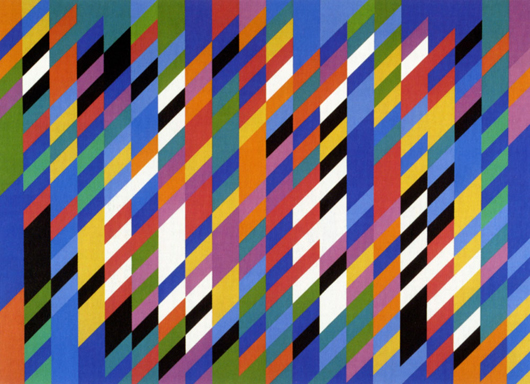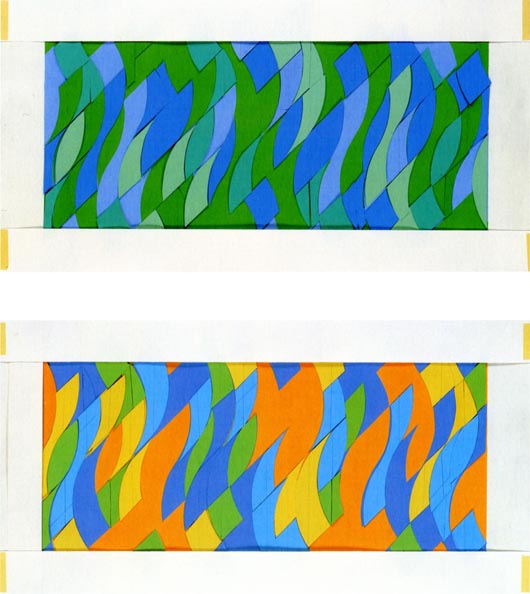Women from history: Thinking Bridget Riley
By Julia Ritson The 80-year-old Bridget Riley has been on my mind a lot lately.
So I pulled out my collection of Riley books. From left to right the paintings featured on the covers are Reef from 1977; Paean from 1973; and Ecclesia from 1985.
Collection of Bridget Riley Books, 2012
After a bumpy ride to fame in the 1960s following an exhibition at the Museum of Modern Art in New York, Riley experienced the voracious appetite of the fashion world.
A ragtrader man connected with the Museum of Modern Art had bought one of Riley's paintings and proceeded to make dresses based on the work. Direct copies.
Riley tried to take legal action but learnt there was no copyright protection for artists in the US. It was the type of fame that appalled Riley and after the experience she said it would take twenty years before anybody would look at her work again.
But the Australian Women's Weekly was looking. It's hard to imagine this article appearing in the current magazine, although in 1979 it seems there was genuine interest in contemporary art.
The Australian Women's Weekly, 27 June 1979
But back to the important stuff. The paintings. By the early 1980s you start to see a very composed Riley. Very considered. Striped colour sensations. Slowly adding colour and subtracting colour. Adding new forms but still leaving traces of the old forms. A dance. There is a joyous syncopation.
In this striking painting Riley introduces black.
Bridget Riley, 'Gaillard', 1989
You can see the progress from the above work in 1989 to her Matisse-like curvy works in the late 1990s. Something old and something new. Like a fugue.
Bridget Riley, 'Lagoon 1', 1997
It is always interesting to see how artist's prepare for paintings. In this case Riley produces paper cut outs before working on linen. Weaving her work.
Bridget Riley, Rough Study for Blues and Greens, 2001 and Yellow and Blues, 2002
Bridget explains her approach to change and creation. "It can sometimes happen that when confronted by what seems to be a wall, which one cannot get either through or round, a kind of radical re-orientation is called for. Turning the whole thing over so that an approach can be made from the opposite side, as it were. If this is to succeed, it nearly always means relinquishing some cherished notion or something that you have relied upon. This destructive side to creative life is essential to an artist's survival."
Bridget Riley is now creating big wall works with black rhythmic interlocking circles.
Here's to many more lyrical works.
Julia Ritson is a Melbourne artist. Her paintings investigate color, abstraction and a long-standing fascination with the grid. Julia has enriched and extended her studio practice with a series of limited edition art scarves. She also produces an online journal dedicated to art and scarves and architecture.





